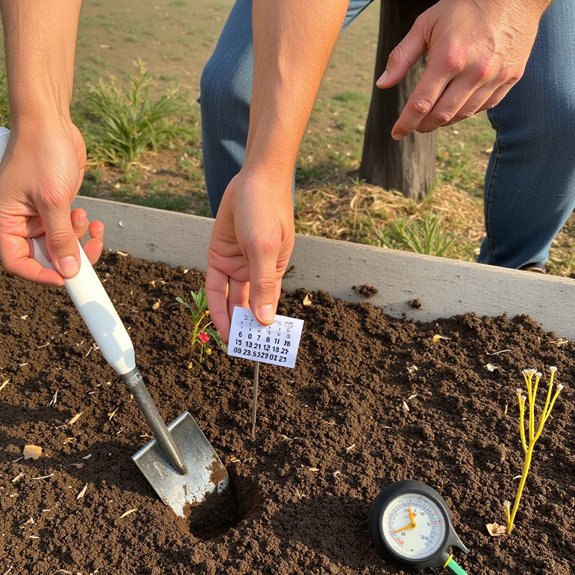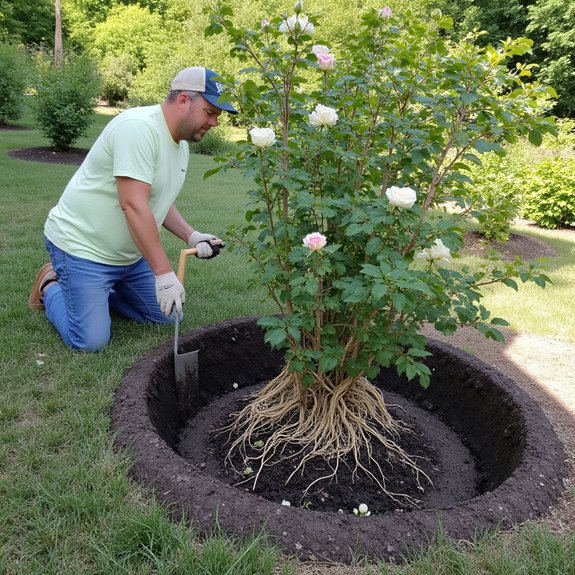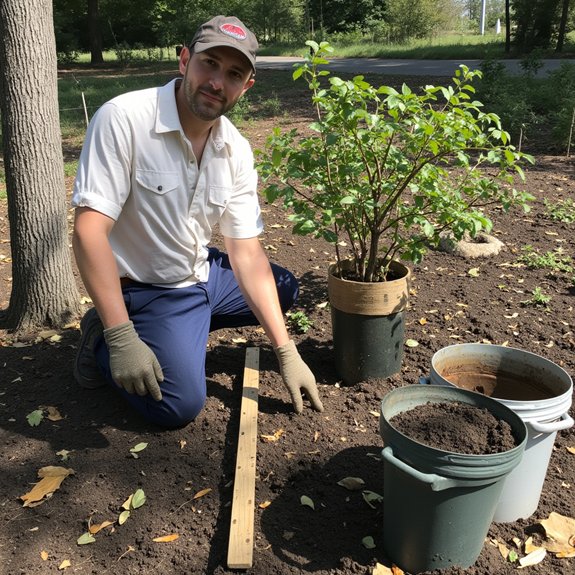Transplanting rose bushes successfully hinges on three critical factors: timing, technique, and aftercare. Most gardeners make costly mistakes by moving roses during active growing seasons, which can shock the plant’s root system and stunt growth for months. The dormancy period between late fall and early spring offers the ideal window, when roses naturally conserve energy and tolerate disturbance better. However, knowing when to transplant only scratches the surface of what determines whether your relocated roses will thrive or merely survive.
Contents
- 1 Timing Your Rose Transplant for Success
- 2 Understanding Rose Varieties and Their Transplant Needs
- 3 Digging Up Your Rose Bush Properly
- 4 Pruning Considerations During Transplantation
- 5 Selecting and Preparing the Perfect New Location
- 6 Transplanting in Challenging Weather Conditions
- 7 Post-Transplant Care and Troubleshooting
Timing Your Rose Transplant for Success

When planning a rose transplant, timing determines whether the bush thrives or struggles in its new location. The best transplant timing occurs during dormancy, when roses aren’t actively blooming or producing new growth. Spring months from February through May offer ideal conditions, as do fall periods between September and November. These seasonal considerations guarantee mild weather that promotes proper root development without stress.
Avoid frozen ground and scorching summer heat, both of which shock transplanted roses. In consistently warm climates, transplant during cooler morning or evening hours to minimize temperature stress and enhance establishment success.
Understanding Rose Varieties and Their Transplant Needs
Most rose varieties handle transplanting remarkably well, though their individual needs vary based on breeding and hardiness levels. Understanding rose characteristics helps determine the best approach for each type.
Hybrid tea roses require more delicate handling during the transplant process compared to their hardier cousins. These elegant varieties need extra care when preserving their root systems, as they’re less forgiving of root disturbance.
Hardy varieties like rugosas and shrub roses tolerate transplanting with minimal fuss. Variety selection plays a significant role in transplant success, with tougher breeds recovering faster from the moving process.
Digging Up Your Rose Bush Properly

Proper root-ball preservation marks the difference between transplant success and struggling recovery for rose bushes. Water the rose daily for several days before digging to guarantee proper hydration. Dig a wide hole around the plant, evaluating root reach to minimize damage during extraction.
Use a shovel to scoop underneath the largest roots, loosening them carefully from surrounding earth. Some fine feeder roots will break during this process, which is perfectly acceptable for healthy recovery. Maintain soil attachment to the roots rather than manually removing dirt, as this natural coating protects delicate root structures during the shift period.
Pruning Considerations During Transplantation
Resist the urge to drastically prune rose canes during transplantation, as this common gardening mistake can send bushes into harmful shock. Research shows that extreme pruning techniques actually harm roses rather than help them recover. While bare-root roses typically arrive trimmed to 12-18 inches, established bushes should retain their healthy canes.
Focus on removing only dead, damaged, or diseased wood. The pruning benefits many gardeners expect simply don’t materialize during transplant stress. Instead, minimal cutting allows roses to direct energy toward root establishment. Save major shaping for after the bush settles into its new location and shows strong growth.
Selecting and Preparing the Perfect New Location

While careful pruning sets the stage for recovery, choosing the right spot determines whether a transplanted rose will simply survive or truly thrive in its new home. Sunlight exposure takes priority—roses demand 6-8 hours of direct sunlight daily. Avoid competition from large trees or shrubs that steal nutrients and create shade.
Soil quality matters equally. Well-drained, loamy soil prevents root rot while providing essential nutrients. Space roses 2-3 feet apart for proper air circulation, reducing disease risks.
Plant with the bud union just below soil level, protecting it from winter damage while ensuring proper establishment.
Transplanting in Challenging Weather Conditions
Though spring and fall provide ideal transplanting windows, gardeners sometimes face unavoidable circumstances that demand moving roses during extreme summer heat or winter cold. Summer challenges require daily watering before and after planting, plus heavy mulching to cool soil and retain moisture. Provide temporary shade during peak sun hours to prevent heat stress. Winter transplanting demands different tactics: use containers to protect roses from freezing, trim roots as needed for proper fit, and store plants in sheltered, unheated locations away from direct sunlight. Water sparingly during winter storage to prevent root rot while maintaining minimal moisture.
Post-Transplant Care and Troubleshooting
Once the transplanted rose settles into its new location, gardeners must monitor the plant’s recovery and address any signs of stress that may emerge. Post transplant watering requires daily attention for the first few weeks, ensuring soil remains consistently moist but not waterlogged. Signs of transplant shock include leaf scorch and stunted growth, which indicates the plant is struggling to establish new roots.
Monitoring growth becomes essential during the first two months. Remove any new buds that appear, directing the rose’s energy toward root development rather than flowering. Wait approximately two months before fertilizing mature transplanted roses, allowing proper establishment first.
